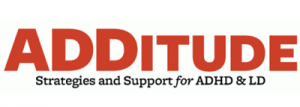Category: Anxiety, Depression & More
Starting Tasks with ADHD: How to help kids and teens feel motivated to get the ball rolling!
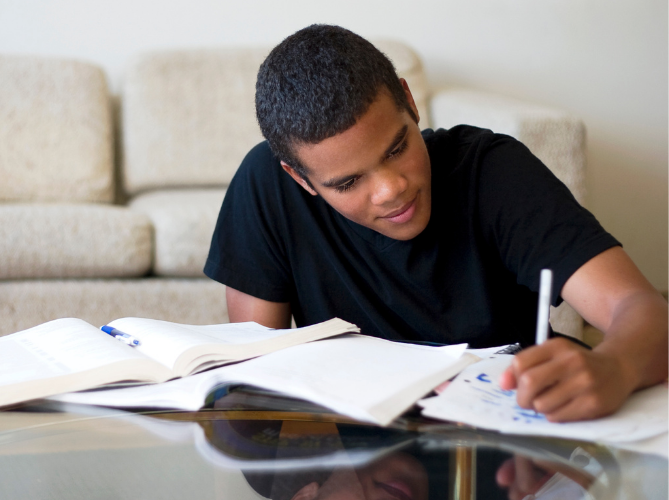 Have you ever asked your teen with ADHD to start their homework–over and over–and, still, they don’t sit down to do it? Even if they’re failing the class, and it means they won’t be able to play on the basketball team? Even if it means that they won’t be able to go out on Friday night? It’s hard not to become immensely frustrated with their behavior at this point. But, most often, starting tasks with ADHD is challenging because they lack the motivation, either internal or external, that would get them going. How can you, as their parent, assist them in developing much-needed motivation?
Have you ever asked your teen with ADHD to start their homework–over and over–and, still, they don’t sit down to do it? Even if they’re failing the class, and it means they won’t be able to play on the basketball team? Even if it means that they won’t be able to go out on Friday night? It’s hard not to become immensely frustrated with their behavior at this point. But, most often, starting tasks with ADHD is challenging because they lack the motivation, either internal or external, that would get them going. How can you, as their parent, assist them in developing much-needed motivation?
Internal vs. External Motivation: Getting to the starting line
Let’s first reflect on ourselves and what helps us do things.
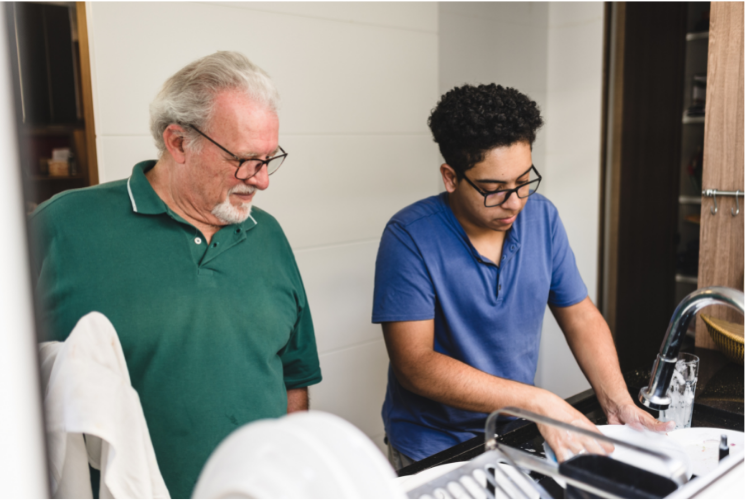
It’s easy to do something you like, whether it’s reading an engrossing novel or playing tennis on a sunny day. It is MUCH harder to do something that you don’t like, such as folding laundry or taking out the trash.
When a task is fundamentally unrewarding or uninteresting, we are not very compelled to do it. We lack internal motivation.
When a task doesn’t have meaningful deadlines or immediate consequences to get us started (i.e. your boss expects the report tomorrow), it lacks external motivation. In both cases, we have to find something to get us going, and neurotypical adult brains rely on fully matured frontal lobes to do so.
Why your child or teen with ADHD struggles to start tasks
Children and teens with ADHD have not yet developed the executive functioning skills to overcome poor focus, disinterest or boredom to get unpleasant tasks done. They often do not possess the strategies or solutions to address either internal or external motivation deficits. If something seems unappealing, they turn away from it–even if the consequences are serious.
Most kids have to rely on external rewards to rouse themselves. Internal motivation, and the satisfaction a person receives when a dreaded task is completed, comes later– in early adulthood. So children and teens need help from adults in their lives to create external rewards that are both meaningful and encouraging.

3 simple steps to get your child with ADHD feeling MOTIVATED:
1. Talk about the concept of external motivation
Most ADHD children and teens will acknowledge when they struggle with focusing and what tasks lack inherent interest or value for them. Ask what has assisted them in doing such things in the past and what would entice them to do them now.
2. Decide in advance with your child what the rewards will be for finishing something that is difficult to do
For example, if your son finishes his history project on time, maybe he can go out for pizza with his friends. Or, if he works for 30 minutes, he can earn 10 minutes of social media or music time.
Do not remove the agreed upon reward if he engages in a separate behavior that you don’t like. If he earned the reward for doing the agreed-upon activity, then he should have it.
3. Break the task down
Remember: Most ADHD kids and teens have a great deal of difficulty starting something unpleasant because the task seems too large. Break it down into smaller components with timed rest periods during which your child or teen can engage in a desired activity.
Putting it all into practice: Helping your kid with ADHD start tasks — without the arguments.
Let’s say, for example, your 12 year old daughter’s room is a mess. It’s been in this state for a few weeks now, and you’re anxiously waiting for her to at least get started on cleaning it up.
Your perspective:
 Now, as an experienced adult who has cleaned many rooms in your lifetime, you can easily see what needs to get done–especially if you’re neurotypical. You can quickly imagine an order in which she could complete the steps and about how long each task would take.
Now, as an experienced adult who has cleaned many rooms in your lifetime, you can easily see what needs to get done–especially if you’re neurotypical. You can quickly imagine an order in which she could complete the steps and about how long each task would take.
You can also imagine the final product: a beautiful, comfortable and welcoming bedroom. It’s a delightful, desirable, intrinsically motivating outcome that would keep you pushing through the tedious tasks of cleaning and organizing.
Your daughter’s perspective:
Your neurodivergent daughter, on the other hand, doesn’t see the task of cleaning her room from your perspective. She has a harder time seeing the project in small steps and is immediately overwhelmed with the thought of starting anywhere.
It seems like there’s too much to handle because there’s more than she can tackle at one time. She’s having a hard time seeing the smaller steps involved that she could work on here and there. She’s also struggling to imagine organizing her room more efficiently. With school books to read, friendships to grow and soccer games to win, she’s not focusing on a cleaning project that involves more internal motivation than external.
Step 1: Before approaching her about your concern, ask yourself it it’s the right time.

Are you going to push the topic because of your discomfort of walking by a messy room, or because you think a more organized room would genuinely help her?
Is she is the right headspace to consider tackling her room? For instance, it wouldn’t be best to bring up the topic during a day that she’s feeling stressed about an upcoming exam. And, even if you’re familiar with the mood-boosting effects cleaning and organizing can bring, don’t ask her to focus on cleaning her room when she’s in a low mood after a disagreement with a friend. Unless they know they enjoy cleaning, another activity would be more comforting in that moment. For someone who has ADHD, feeling physically, mentally or emotionally drained will only make it more difficult for them to engage their executive functioning skillset.
Step 2: Bring up your concern, and listen to her side of the story, too.
 Sit down with your daughter and discuss your concern with her bedroom. Ask her how she feels about it. Does it bother her? Does she have a method of organization that works for her, even if you don’t understand it? Help her understand the potential benefits of a clean, inviting room; for herself, her guests and your family. See if she feels a difference between walking into a clean room (you can use yours as an example) and a disorganized room.
Sit down with your daughter and discuss your concern with her bedroom. Ask her how she feels about it. Does it bother her? Does she have a method of organization that works for her, even if you don’t understand it? Help her understand the potential benefits of a clean, inviting room; for herself, her guests and your family. See if she feels a difference between walking into a clean room (you can use yours as an example) and a disorganized room.
Step 3: Brainstorm a plan and solutions to any organizational changes that need to be addressed.
If she’s feeling stuck with where to start, write a list of the smaller steps that make up the project as a whole. Ask if there are ways you can help reorganize her room. Is it time for a bigger bookshelf? Can you offer a trip to the local donation center to drop off some old clothes and free up more space in her closet?
Step 4: Build on external motivation.
Rather than promising more items that will only add to the organization project, perhaps plan a fun weekend outing together when you can drop off the clothes. You can pick up some ice cream or stop by their cousin’s house for a visit. What is an activity that she’ll genuinely enjoy, and perhaps help you both connect more positively?
Step 5: Plan how long you’ll tackle each step.
Think realistically together about how long she can actually work before she gets distracted. Let’s say, 20 minutes. Set up three 20 minute work periods with 5 minute movement, snack or bathroom breaks.
 Remember, your child or teen might need help figuring out where to begin, or they might want you to stay in their room to help guide them through the process. Your skills, ideas and encouragement can be a key to their success! Good luck with your efforts, and let’s get started!!
Remember, your child or teen might need help figuring out where to begin, or they might want you to stay in their room to help guide them through the process. Your skills, ideas and encouragement can be a key to their success! Good luck with your efforts, and let’s get started!!
Read more blog posts:
- Planning and Prioritizing Practices for ADHD Brains: What’s the plan, and when do you start?!
- Personal Project Planners for ADHD Minds: Start managing tasks, time and ideas with this creative tool!
- ADHD and Motivation: How stress reduces productivity and what you can do about it
Watch on Dr. Sharon Saline’s YouTube Channel:
-
- Initiating and Completing Tasks with ADHD (ADDitude Mag ADHD Q&A with Psychologist Dr. Sharon Saline)
- Planning and Prioritizing with ADHD (ADDitude Mag ADHD Q&A with Dr. Sharon Saline)
- 4 Tips to Boost Motivation in Kids and Teens (WWLP 22 News Mass Appeal Interview with Dr. Sharon Saline)
Deeper Dive: https://drsharonsaline.com/product/motivation/ https://drsharonsaline.com/product/home-seminar/
Tone of Voice Awareness in Neurodiverse Families: How to practice self-regulation in family conflicts
 Neurodiverse families often struggle with emotional reactivity and verbal impulse control. Negative feelings and unpleasant words can intensify in the blink of an eye. Still, when the moments arise, it’s hard enough to calm down your own emotions — let alone the emotions of your child, teen or partner. Where do you even start? When that tone of voice (the one you’re all too familiar with) enters the picture, you can use the quick and direct steps of “T.O.V.” to help initiate a process of self-reflection and self-regulation for your family and yourself. Tone of voice awareness takes practice, but it’s a skill that will improve family communication and connections for years to come.
Neurodiverse families often struggle with emotional reactivity and verbal impulse control. Negative feelings and unpleasant words can intensify in the blink of an eye. Still, when the moments arise, it’s hard enough to calm down your own emotions — let alone the emotions of your child, teen or partner. Where do you even start? When that tone of voice (the one you’re all too familiar with) enters the picture, you can use the quick and direct steps of “T.O.V.” to help initiate a process of self-reflection and self-regulation for your family and yourself. Tone of voice awareness takes practice, but it’s a skill that will improve family communication and connections for years to come.
Family conflict: A familiar story
You are almost finished cooking dinner, a meal you’ve been planning since your last shopping trip a few days ago. You made sure to plan a meal that the whole family can enjoy, taking into account your son’s eating specifications. Everyone has had a rough week transitioning back into school mode. On top of that, work has been a bit overwhelming. You’ve been dealing with headaches on and off, and are ready for some quiet time. You have been looking forward to this meal all week, if not only to have some quality time with your family. You go to pull the roast out of the oven and call the kids in to help prepare the table. Your daughter comes in and begins to work with place settings. You call your son in – for the third time – and he stomps in, muttering about how he wasn’t able to finish the level in his video game. 
You remind him he has plenty of time after dinner to wrap up his game and save it. In the middle of your sentence, you hear a commotion, high-pitched screech. You turn, and the kids are going at it. “She took my favorite cup!” he yells. They begin to chase each other around the kitchen.
You huff as you try to get the food from your prep station to the table without tripping over them. “If you had come in to help when I first called, you could have chosen your favorite cup.” “It’s not fair!” he screams, and hits his fist on the table, scattering silverware and causing a side dish to fall. Your heart rate spikes, your face flushes. You want to scream, but you know you have to set a good example. Your headache increases in intensity.
How did your easygoing family evening escalate into this?
Why can’t your son use another of your many drinking glasses? When will he learn to modulate how he expresses himself and be more cooperative? Why did you allow yourself to be upset by him in the first place? You’re aware that impulsivity and emotional dysregulation are challenges for your neurodiverse family. And yet, here you are again, ready to pull your hair out.
Enter: Tone Of Voice Awareness
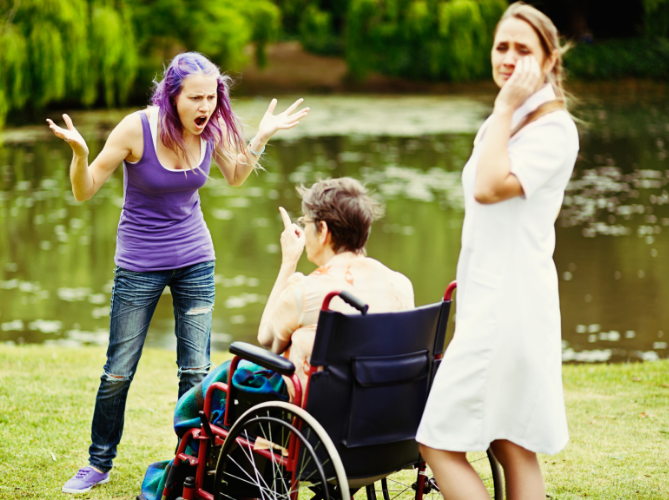 So often, neurodivergent kids aren’t really aware of how they say things. They might have difficult understanding how what they say (and how they say it) can affect others. They might need guidance learning how to slow down and reflect on what they just expressed. But, since they are often sensitive to criticism, direct feedback can frequently backfire. Discussing the impact of their tone of voice allows your child – and your entire family – to reflect for themselves on how they can say something in a more impactful way. It also allows them to have more tone of voice awareness around their thoughts before they communicate them. Incorporating T.O.V. allows kids to practice several skills simultaneously: emotional regulation, verbal and behavioral impulse control, planning, shifting and personal insight (metacognition). So, where does this lesson start?
So often, neurodivergent kids aren’t really aware of how they say things. They might have difficult understanding how what they say (and how they say it) can affect others. They might need guidance learning how to slow down and reflect on what they just expressed. But, since they are often sensitive to criticism, direct feedback can frequently backfire. Discussing the impact of their tone of voice allows your child – and your entire family – to reflect for themselves on how they can say something in a more impactful way. It also allows them to have more tone of voice awareness around their thoughts before they communicate them. Incorporating T.O.V. allows kids to practice several skills simultaneously: emotional regulation, verbal and behavioral impulse control, planning, shifting and personal insight (metacognition). So, where does this lesson start?
How to improve tone of voice (T.O.V.) awareness for more effective family communication
Step 1: Introduce the concept naturally.

Introducing T.O.V. won’t be very helpful unless it is introduced at a time when everyone is willing to listen and learn. In a calm moment, you explain to your neurodivergent child or teen that sometimes everyone needs help with improving tone of voice awareness and learning how their words and their tone of voice affect others.
If you have multiple children, it is important to include everyone in the conversation. This will make everyone feel like they are an equal part of the conversation, and will keep you from singling anyone out. Let them know that you will be saying “T.O.V.” out loud when you think they should reflect on how they are speaking to someone. Allow them a minute or two to practice their tone of voice awareness and pivot how they are speaking. Encourage them to try again.
Step 2: Be prepared that it might not always work immediately.
If your child or teen can’t manage their emotions enough to change their communication style, then encourage a timed break. Allow them – and yourself – personal space to breathe and regroup. Many times, a 10-15 minute break is all it takes. But be prepared for it to take a little longer, depending on everyone’s headspace.
Step 3: Be willing to forgive and move on.
When your child or teen is successful in practicing tone of voice awareness and adjusts how they are speaking to you, your job is to appreciate their efforts, accept their attitude adjustment, and move forward. Positive steps in the right direction include speaking slower or quieter and using more polite, less aggressive, language. Let them know how much their attitude adjustment means to you. Positive reinforcement is very important, especially in any child/adult relationship.
Remember, T.O.V. is a tool for everyone.
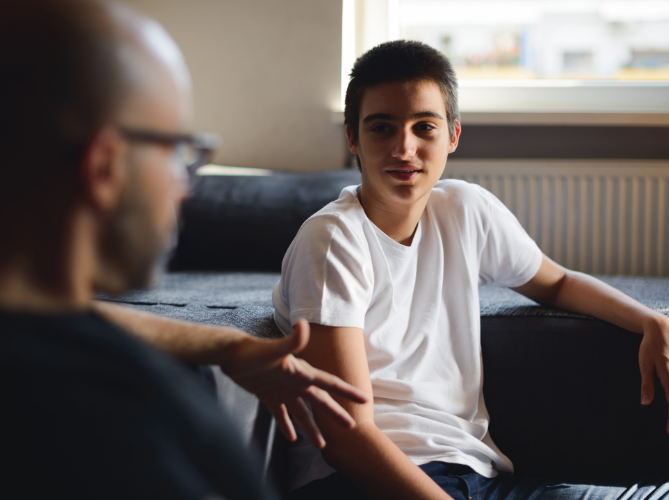 As much as you may be using “T.O.V.” to help improve your child’s communication efforts, you need to know your kids could call you out, too! How you respond to this is incredibly important. A good approach is to acknowledge your feelings, or laugh and admit that you are also capable of messing up. While you don’t want to create an environment where everyone is calling out “T.O.V.” constantly, you do want to lead by example in combative situations, and take the opportunity to practice tone of voice awareness for yourself! Be selective when you use it, and they will be encouraged to do so as well. More than anything, it’s important to realize that everyone is human. You can only react to things as your mood allows, and making sure you set everyone up with the proper tools to learn and grow through the aggressive moments can be very impactful.
As much as you may be using “T.O.V.” to help improve your child’s communication efforts, you need to know your kids could call you out, too! How you respond to this is incredibly important. A good approach is to acknowledge your feelings, or laugh and admit that you are also capable of messing up. While you don’t want to create an environment where everyone is calling out “T.O.V.” constantly, you do want to lead by example in combative situations, and take the opportunity to practice tone of voice awareness for yourself! Be selective when you use it, and they will be encouraged to do so as well. More than anything, it’s important to realize that everyone is human. You can only react to things as your mood allows, and making sure you set everyone up with the proper tools to learn and grow through the aggressive moments can be very impactful.
Read more blog posts:
- Cooling Down Conversations in Neurodiverse Families: De-escalate and Do-over with ‘WAIT-Now’ and ‘Take Back of the Day’
- ADHD and Defiance during COVID: What can you do instead of yelling?
- Beyond Sibling Rivalry: How to Mediate Sibling Relationships Complicated by ADHD
Watch on YouTube:
- ADHD and Oppositional Defiance (ADDitude Mag Q&A with Dr. Saline)
- Anger Management with ADHD (ADDitude Mag Q&A with Dr. Saline)
- How to Get Your Teens to Open Up (WWLP 22 News interview with Dr. Saline)
https://drsharonsaline.com/product/managing-technology-families-video/ https://drsharonsaline.com/product/home-seminar/
ADDitude Mag: No Motivation? 5 Steps to Build Drive and Confidence
ADHD Support Talk Radio: Perfectionism, Shoulds & Adult ADHD
Negative Memory Bias and ADHD: Tips to Help Kids and Youth with ADHD Remember the Positives
 Have you ever noticed that your child or teen with ADHD remembers negative comments people say to them more than they do positive ones? While all human brains are wired for the negative memory bias, or negativity bias, the minds of kids and youth with ADHD seem more vulnerable to holding onto what is “bad“ more than what is “good.” The combination of the negative memory bias and ADHD symptoms such as working memory challenges, emotional dysregulation and low self-esteem can make it even more challenging for people living with ADHD to balance out with positive memories. Let’s dive more into the impacts of the negativity bias on people with ADHD, as well as helpful strategies you can use to help the children and youth in your life focus more on the positives.
Have you ever noticed that your child or teen with ADHD remembers negative comments people say to them more than they do positive ones? While all human brains are wired for the negative memory bias, or negativity bias, the minds of kids and youth with ADHD seem more vulnerable to holding onto what is “bad“ more than what is “good.” The combination of the negative memory bias and ADHD symptoms such as working memory challenges, emotional dysregulation and low self-esteem can make it even more challenging for people living with ADHD to balance out with positive memories. Let’s dive more into the impacts of the negativity bias on people with ADHD, as well as helpful strategies you can use to help the children and youth in your life focus more on the positives.
The impacts of negative memory bias in children and youth with ADHD
This negative memory bias is strengthened for kids and youth with ADHD during childhood. It’s common for family members, peers, teachers, coaches and other influential people in children’s lives to criticize children and youth with ADHD. Oftentimes, people might intend to offer feedback, but kids still interpret the statements as criticisms. They’re not remembering things, not doing things properly, keeping things messy, not controlling themselves, etc. These encounters are opportunities to focus on, remember and learn from as children with ADHD grow up. But focusing on the negatives can contribute to negative self-talk, as well as feelings associated with shame, anxiety and depression.  In addition to the negative memory bias, many people with ADHD experience Rejection Sensitive Dysphoria, which involves having a heightened response – often physical, mental and emotional – to rejection, criticism, mistakes and other negative experiences. Putting more weight on these negative experiences over positive ones can impact behavior and decision making, such as people-pleasing, striving for perfection or avoiding situations that might have negative outcomes (even if those same experiences could also lead to positive outcomes). While our ancestors needed the ability to learn and remember lessons from tough experiences for survival, people today also need to learn how to retain lessons from good experiences. This is especially true for children and young people with ADHD. Beneficial experiences not only serve as the foundation of self-esteem, secure attachment and self-management, but they also nourish inner strengths. How can we help balance the weight of negative experiences with positive ones for children and youth with ADHD?
In addition to the negative memory bias, many people with ADHD experience Rejection Sensitive Dysphoria, which involves having a heightened response – often physical, mental and emotional – to rejection, criticism, mistakes and other negative experiences. Putting more weight on these negative experiences over positive ones can impact behavior and decision making, such as people-pleasing, striving for perfection or avoiding situations that might have negative outcomes (even if those same experiences could also lead to positive outcomes). While our ancestors needed the ability to learn and remember lessons from tough experiences for survival, people today also need to learn how to retain lessons from good experiences. This is especially true for children and young people with ADHD. Beneficial experiences not only serve as the foundation of self-esteem, secure attachment and self-management, but they also nourish inner strengths. How can we help balance the weight of negative experiences with positive ones for children and youth with ADHD?
Working memory, the negative memory bias and ADHD
In order for the good moments to outmaneuver the negativity bias, they have to be installed in the brain’s neural structures. This process requires holding the thought in the working memory long enough to be picked up by short-term memory structures and then transferred to the long-term memory. Of course, people with ADHD, by definition, typically struggle with working memory challenges. Therefore, this transfer doesn’t occur as frequently as we would like, if at all. So the key issue here is “long enough.“ While there is no research to give us a specific time for this, “long enough” usually means holding a positive emotion, desire, action or outcome to actually feel it–to reflect on it and let it sink in. I would venture to guess this means up to a minute if not longer. How can you assist your ADHD child or teen to do this more successfully?
5 tips to help children and youth with ADHD focus on and remember the positives:
1. Teach and value the importance of celebration.
 When something good happens, teach them that relishing it is important! In our ultra fast-paced world, everyone moves on to the next thing so quickly. Oftentimes, the important integration needed to consolidate memory can be missed. Therefore, negative experiences, strengthened by negative memory bias and ADHD symptoms, aren’t being balanced with positive ones. SLOW IT DOWN, and celebrate positive moments alongside them. It’s also important to show your child or teen that “celebration” doesn’t have to mean a festive gathering with family and loved ones. Rather, it could mean treating yourself to an ice cream or dancing alone to your favorite song. Celebrations don’t depend on other people showing up – you can celebrate yourself and your personal accomplishments in various ways that might change over time.
When something good happens, teach them that relishing it is important! In our ultra fast-paced world, everyone moves on to the next thing so quickly. Oftentimes, the important integration needed to consolidate memory can be missed. Therefore, negative experiences, strengthened by negative memory bias and ADHD symptoms, aren’t being balanced with positive ones. SLOW IT DOWN, and celebrate positive moments alongside them. It’s also important to show your child or teen that “celebration” doesn’t have to mean a festive gathering with family and loved ones. Rather, it could mean treating yourself to an ice cream or dancing alone to your favorite song. Celebrations don’t depend on other people showing up – you can celebrate yourself and your personal accomplishments in various ways that might change over time.
2. Ask questions about ‘highs and lows’ at dinnertime
Practice doing highs and lows of the day at dinner with the family. Encourage everyone to say something. Don’t ask questions about the statements during the sharing. Instead, if you want to follow up on an issue, ask first. We are trying to create a safe place to hold both the positive and negative occurrences simultaneously; giving them equal weight. This process will create new, essential neural pathways. If daily highs and lows are too much for your family, then do them once a week at regular meal, like Friday dinners. Try to stay as consistent as possible to create the strongest impact on balancing out the negative memory bias.
3. Give genuine, positive feedback daily that is succinct.
Honestly, nothing is too small to be acknowledged. When you do this, make sure you get down to your child’s physical level. If your ADHD teen is taller than you are, ask them to sit down so you are at the same level. Put a hand on their arm or shoulder, if that’s comfortable. Maintain eye contact with them if you can, and be clear that they get it! 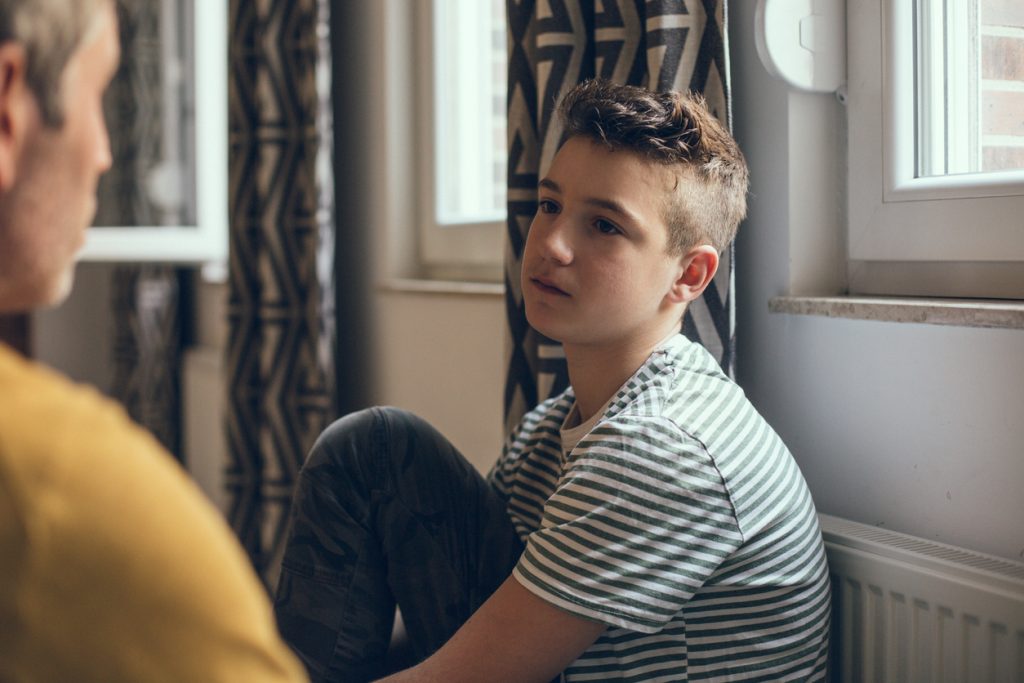 As corny as it sounds, you could even ask them to repeat what they heard you say:
As corny as it sounds, you could even ask them to repeat what they heard you say:
-
- Parent: “Look I really want to make sure that you understood what I said. Can you please repeat it?”
- Child: “Do I have to?”
- Parent: “Yes.”
- Child: “Fine, I heard you tell me that you appreciated that I hung up my coat when I got home.” Or, “I heard you say that you liked when I got off my computer right after the timer went off.”
These exchanges build the neural pathways we are seeking to create and increase inner strengths, balance out the impacts of negative memory bias and foster interpersonal connection. Kids and youth with ADHD often interpret feedback in any form as negative. Be aware of how you word and how they interpret your statement. Try the ADHD Adapted Sandwich Feedback Method to formulate more neutral and effective statements.
5. Explain the subjectivity of criticisms and negativity.
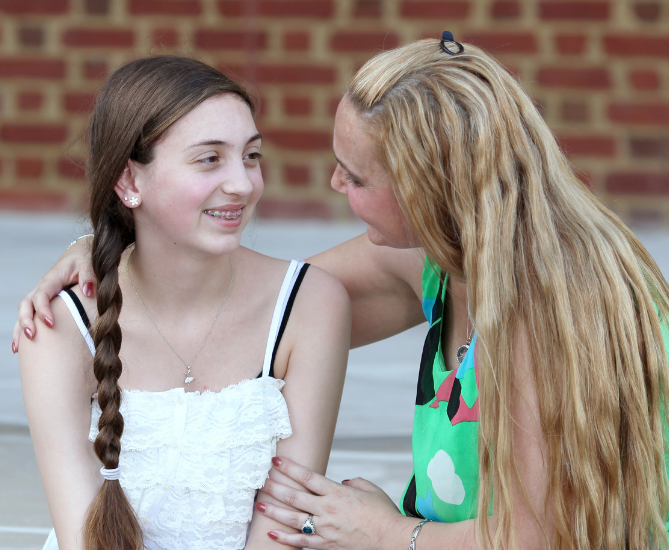
Kids with ADHD often endure frequent criticism, or perceived criticism, from influential people growing up. Your child or teen may be motivated to focus on these encounters so they learn not to remake “mistakes,” “improve” their abilities and behavior, rebuild self-esteem, gain acceptance and avoid further criticism.
Children and teens might not yet understand, however, that that criticism can be unwarranted and ableist. In other words, people often make remarks that neglect to accept the differences that come naturally with neurodiversity. Children, instead, deeply value the opinions of – and need support from – their family, friends and community. Instead of questioning the validity of the statement, they tend to trust what they have to say. Review with your child or teen the importance of valuing each others differences. In addition, lead by example by outwardly expressing appreciation for their – and other people’s – different strengths and overall differences. Explain how criticisms can be subjective, and why people might make inaccurate statements or remarks without thinking them through. This can be confusing, so remain approachable and check-in when moments are calm to see if they need support with understanding statements and situations.
5. Keep it up, regardless of any unwelcome response that you may receive.
Remember, the pull towards negativity and retaining bad experiences is longstanding and ingrained. Stopping your efforts to counteract it will likely increase its influence. Educating your teen on the impact of the negative memory bias and ADHD symptoms might help them stay motivated to focus on the positives, too. Though you might not see a difference right away, your values and recognition are making important, life-long impacts on your child or teen’s thought processes, motivation and self-esteem. Start building the GOOD today!
Read more blog posts:
- Are You Giving Feedback or Criticism? Recognize the Difference and Change What You’re Doing
- Raising teens with ADHD: Redefining what ‘success’ means
- 6 Helpful Tips for Dealing with Rejection Sensitive Dysphoria
Handouts, Webinars & More in Dr. Saline’s Store:
https://drsharonsaline.com/product/shame/ https://drsharonsaline.com/product/home-seminar/
ADHD and Negativity: Why ADHD kids and teens say “No” and how to help them communicate
 As a parent of a neurodivergent child with ADHD, you might struggle with understanding symptoms of ADHD and negativity. It seems like you’re constantly catching your child or teen with a negative attitude. It’s ‘No’ to this and ‘No’ to that! You might wonder if this is normal during childhood and adolescence or more so for kids with ADHD. Let’s explore these ‘No’s’ and see whether they’re simply an expression of negativity or something more.
As a parent of a neurodivergent child with ADHD, you might struggle with understanding symptoms of ADHD and negativity. It seems like you’re constantly catching your child or teen with a negative attitude. It’s ‘No’ to this and ‘No’ to that! You might wonder if this is normal during childhood and adolescence or more so for kids with ADHD. Let’s explore these ‘No’s’ and see whether they’re simply an expression of negativity or something more.
Jared and his family’s summer schedule frustration
Recently, I was talking with Jared, an eighth grade boy who was complaining about being bored now that school is over to his mom, Savannah and me. “There’s nothing to do except gaming, and you only let me do that for two hours in the morning and two in the afternoon. What else am I supposed to do?”
 His mom gently suggested going back to some activities that had previously interested him before COVID—piano lessons, basketball, tennis or making movies with his friends. “No, no, no. I don’t want to do any of those!” His mom turned to me and said, “I used to do this to my mom. There’s never a right answer.”
His mom gently suggested going back to some activities that had previously interested him before COVID—piano lessons, basketball, tennis or making movies with his friends. “No, no, no. I don’t want to do any of those!” His mom turned to me and said, “I used to do this to my mom. There’s never a right answer.”
I wondered aloud if his ‘No’s’ actually meant, ‘Forget about it,’ or, ‘I’m not sure and need to think about it.’ Tennis and making movies were hard ‘No’s.’ Piano and basketball were more of an, ‘I’ll think about it.” I asked him why he doesn’t just say that and he shrugged, “I don’t know…I just can’t think about all that stuff at once.”
We talked about how saying ‘No’ flat out like that gives him space to think about something without any pressure. The ‘No’ seemed to be less of a problem with ADHD and negativity, and more of a request for space to think. The gears in my mind immediately started turning.
The impact of ADHD on negativity
Due to working memory and processing speed challenges, kids with ADHD and negativity challenges are often feeling overwhelmed—emotionally, cognitively or socially. They simply lack adequate amounts of dopamine and norepinephrine in their brains to help them process and recall information efficiently. Over time, becomes hard to keep up with all of the activity around them.
These are mostly unconscious cognitive processes that kids struggle to articulate. Instead, what most kids tell me is that they simply feel flooded and agitated. They lash out and regret their words and actions afterwards. They might also be coping with anxiety or symptoms of rejection sensitive dysphoria. These challenges that commonly occur with ADHD can appear as negativity.
Negativity in public vs. at home
 Kids and teens with ADHD try to muddle through and manage these feelings at school and with friends. However, they don’t feel obligated to make the same efforts at home.
Kids and teens with ADHD try to muddle through and manage these feelings at school and with friends. However, they don’t feel obligated to make the same efforts at home.
Jared once told me, “I’m not going to be suspended from my family.” They don’t have to hold it all together with people they know love them, and whom they love too (despite any actions to the contrary). But this doesn’t mean you have to endure inappropriate language, fury and sometimes aggressive behaviors. This doesn’t foster a positive connection between you, nor does it teach your child or teen how to manage their intense feelings effectively.
Check in with your child or teen about ‘NO.’
In a calm moment, sit down with your child and talk about ‘NO.’ Put on your Sherlock Holmes hat, take out your curiosity and gather some information about your child’s challenges with ADHD and the negativity that you experience.
Reasons and meanings behind ‘NO’ often depend on the situation, so it might help to bring up some specific instances for an effective discussion. Is saying ‘NO’ about setting appropriate limits, expressing their opinion, being contrary, slowing things down or something else? Maybe it’s a combination of things. Brainstorm alternatives to ‘NO,’ and come up with a few words or phrases to use when they need time to think about something.
Create a plan with your child or teen on how to address oppositional behavior
To address ADHD, negativity and flat-out oppositional behavior, you have to create a collaborative action plan.
-
-
- Start by discussing some plans and ground rules about explosions or meltdowns in your home.
- Ask your ADHD child or teen to describe what words or actions constitute over-the-top moments, and then offer some of your observations. To avoid blame, use the phrase,“I’ve noticed that things get out-of-control when…” and be as specific as you can.
- Consider sharing something about what triggers you and how you’d like to change your response. This normalizes their experience which reduces shame about struggling with meltdowns in the first place.
- Together, write down a list of your combined ideas and ask them to link these behaviors to logical consequences. Remember, punishments for kids don’t teach any skills. Kids with ADHD and feelings of negativity need tools to help them calm themselves and communicate in these tricky moments.
- Plan to revisit your plan weekly and post it in the kitchen where everybody can see it.
-
Acknowledge your ADHD child or teen’s efforts to improve communication
 Shifting away negativity takes time, repetition and encouragement. It involves identifying emotions and needs, and then communicating them effectively. Therefore, it’s important to allow your child the chance to process and respond at their own pace. It’s a cycle of practice, stumble, try again and practice some more. Regardless of your own frustration, try to acknowledge and validate any and all efforts your child or teen shows.
Shifting away negativity takes time, repetition and encouragement. It involves identifying emotions and needs, and then communicating them effectively. Therefore, it’s important to allow your child the chance to process and respond at their own pace. It’s a cycle of practice, stumble, try again and practice some more. Regardless of your own frustration, try to acknowledge and validate any and all efforts your child or teen shows.
Managing ADHD and negativity is tough parenting work. Make sure that you practice your own self-care and have support for yourself from close friends, family members, a therapist or coach to assist you. The more you can respond instead of react and regret, the better it will be for everyone in the family.
Read more blog posts:
- ADHD, Defiance and COVID: What can you do instead of yelling?
- ADHD and Anger in the Family: Manage Outbursts with STOP-THINK-ACT
- Create Successful Neurodiverse Family Outings Today: Time to connect with the great outdoors!
Watch on YouTube:
- ADHD and Oppositional Defiance (ADDitude Mag Q&A with Dr. Saline)
- Anger Management with ADHD (ADDitude Mag Q&A with Dr. Saline)
- How to Get Your Teens to Open Up (WWLP 22 News interview with Dr. Saline)
Deeper dive: https://drsharonsaline.com/product/whats-up-with-all-this-anger/ https://drsharonsaline.com/product/home-seminar/
Gender, Sexuality and ADHD: Parenting Children and Youth with ADHD Exploring Their Gender and Sexual Identity

Growing, learning and exploring gender and sexuality
Neurodiverse and neurotypical children, teenagers, and young adults are constantly questioning things. As their brain develops, they learn more about themselves and the world around them. Therefore, it’s natural for them to be inquisitive. Part of this curiosity and self-reflection include topics related to values, beliefs and morals, as well as questions of all aspects of identity. Many young adults explore race, religious and cultural identities, as well as gender and sexuality. When the child has ADHD, the unique facets of this condition can influence this process. It takes courage and maturity to explore each of these areas. It’s especially tricky in our Western culture for any adult to acknowledge that they are questioning their gender or sexual identity. It’s a particularly delicate process for children and teenagers. If your child or adolescent approaches you with this topic, they trust you enough to discuss something very personal and possibly uncomfortable.
Supporting your child’s exploration
 Talking through everything with your child can be incredibly emotional for both of you. Therefore, it isn’t something that should be taken lightly. In neurodiverse children–those with ADHD, ASD, 2E, anxiety and more, natural challenges with executive functioning skills can make these conversations even more overwhelming. Above all, breathe, and stay compassionate. Ask more questions than you give advice. This is a private process of discovery that your child has decided to share with you. It can be tough for both of you but in very different ways. Therefore, you should save your reactions and questions for later. Then, direct them to your primary care provider, pediatrician or mental health professional. Your job is to be steady as they navigate this bumpy terrain.
Talking through everything with your child can be incredibly emotional for both of you. Therefore, it isn’t something that should be taken lightly. In neurodiverse children–those with ADHD, ASD, 2E, anxiety and more, natural challenges with executive functioning skills can make these conversations even more overwhelming. Above all, breathe, and stay compassionate. Ask more questions than you give advice. This is a private process of discovery that your child has decided to share with you. It can be tough for both of you but in very different ways. Therefore, you should save your reactions and questions for later. Then, direct them to your primary care provider, pediatrician or mental health professional. Your job is to be steady as they navigate this bumpy terrain.
Language is important
There are a lot of terms related to gender questioning and sexual identity. However, these two processes are not the same and involve different interventions. I encourage you to educate yourself about them. Here’s a short introduction to some of the more common terms:
-
-
Biological sex
Refers to the physical anatomy of a person that identifies them as male, female, or intersex. This includes their physiology (genitalia and body type) and genetic differences (hormones and chromosomes).
-
Gender identity
The way someone perceives themself as male, female, both, or something entirely different. A person’s gender identity can be the same or different from the sex they are assigned at birth. Cisgender people have a gender identity that matches their sex assigned at birth. In contrast, trans people have a gender identity that is different from the sex assigned at birth. This is where appropriate pronouns – like she, he, and they – can be discussed. However, pronouns don’t always match gender identity.
-
Gender expression
The way anyone communicates their gender identity to others. Often, this is expressed through appearance and play choices.
-
Sexual orientation
Defines who a person is physically and emotionally attracted to, based on their own sex/gender. This particular topic can be a little more difficult to work through, though, especially if the parent, guardian, or confidante is less familiar with gender identity.
-
 When your child approaches you with a conversation about their gender or sexual orientation, consider your response before reacting. They are asking you to perceive them differently than you might have before. This can be very difficult to deal with emotionally. No matter how much support and love you give, teens with ADHD quickly pick up on facial expressions and body language that could feel critical. Many kids and teens with ADHD suffer from symptoms of rejection sensitive dysphoria. You should therefore take a giant step backward to look at the entire picture. This will set the tone for your whole family’s response.
When your child approaches you with a conversation about their gender or sexual orientation, consider your response before reacting. They are asking you to perceive them differently than you might have before. This can be very difficult to deal with emotionally. No matter how much support and love you give, teens with ADHD quickly pick up on facial expressions and body language that could feel critical. Many kids and teens with ADHD suffer from symptoms of rejection sensitive dysphoria. You should therefore take a giant step backward to look at the entire picture. This will set the tone for your whole family’s response.
Tips to help you connect with your child and uplift their truth
1. Listen to your child.
We have all been taught active listening at one point or another. However, try reflective listening so they feel heard and validated. Repeat what you hear them say, and avoid giving advice or telling them what to do. If needed, this can happen later. Make sure to pay attention to how you respond. Does it feel like positive feedback or criticism? Avoid interruptions or any responses that could indicate judgment. Right now, your neurodiverse child needs to feel accepted.
2. Acknowledge their courage.
Your neurodiverse child is so brave already. Therefore, opening up and sharing this with you – especially if they struggle with ADHD – is a pivotal and beautiful moment. Let them know how much courage you see in them. Acknowledge their resilience, and let them know that they have made the right decision in opening up the conversation with you. Tell them that you love them for who they are.
3. Avoid standards of gender normativity.

Examine how you view gender in your own life, and reach out to specialists and read literature. Meanwhile, really work to allow your child to feel comfortable and open. Be sure to ask about your child or teen’s preferred name and pronouns. Also ask how you can make changes without feeling like you are walking on eggshells. Above all, respect your child’s privacy and decisions. Remember, the way you interact with your neurodiverse teen will influence the way their siblings and other family members do, too.
4. Help your child make thoughtful decisions.
No matter how accepting and open you and your family may be with your child’s exploration, not everyone is tolerant. Ask them about any times when their gender identity or sexual orientation has been met with nasty, offensive or even dangerous reactions from others. Discuss safety precautions, and explain how hurtful comments and behaviors, no matter how painful they may be, say more about that other person than with your child.
Strategize appropriate verbal and behavioral responses to negative comments and identify caring adults who can offer support. Neurodiverse kids, who may impulsively react to their big feelings that seem unmanageable, will benefit from these solid stand-by tools for heated or hurtful moments. In addition, if things have been tough, and they are feeling particularly overwhelmed, consider letting your child take a mental health day. This can significantly help neurodiverse children and teens rest, regain clarity and regroup.
5. Seek expert help.
You may have questions during this time. Similarly, your child may want to interact with someone else to help them examine their thoughts and feelings. Your usual team of helpers may not have the necessary expertise. Ask trusted health care providers, friends or family to assist you in finding the resources you need. In addition, consider seeking out online resources, parenting groups, therapists, or gender specialists to help your child through this time of self-discovery.
Recommended resources on neurodiversity and gender diversity:

Websites, Organizations & Articles:
- ADDitude Magazine: https://www.additudemag.com/
- American Academy of Pediatrics – Healthy Children: https://www.healthychildren.org
- CDC Resources: https://www.cdc.gov/lgbthealth/youth-resources.htm
- Gender Spectrum: https://www.genderspectrum.org
- GLAAD: https://www.glaad.org
- It Gets Better: https://itgetsbetter.org/
- Movement Advancement Project: https://www.lgbtmap.org
- National Center for Transgender Equality: https://transequality.org
- The Trevor Project: https://www.thetrevorproject.org/
- Trans Youth Equality Foundation: http://www.transyouthequality.org
- Transgender Resources: https://transgenderesources.com
- Trans-parenting: https://www.trans-parenting.com.
- Queerly Autistic: https://queerlyautistic.com/
- Teach.com: “How to Support Gender Sexuality Alliances in Schools”
Related articles by Dr. Saline:
- “How to Support a Teen with ADHD Who Is Questioning Their Gender” By Sharon Saline, Psy.D. and published by ADDitude Magazine (5/12/21)
- “When Children with ADHD Explore Gender Identity: A Guide for Parents” By Sharon Saline, Psy.D. & Julie Mencher, MSW and published by ADDitude Magazine (6/4/21)
Read more blog posts:
ADHD and Anger in the Family: Manage Outbursts with STOP-THINK-ACT
 Let’s face it: the past 18 months have been rough. For kids and adults living with ADHD, there’s been more challenges than ever managing disappointment, frustration and anxiety. As we transition to a new normal, it’s worth learning from those struggles and angry outbursts that might have arose. It’s time to re-thinking our relationship with anger.
Let’s face it: the past 18 months have been rough. For kids and adults living with ADHD, there’s been more challenges than ever managing disappointment, frustration and anxiety. As we transition to a new normal, it’s worth learning from those struggles and angry outbursts that might have arose. It’s time to re-thinking our relationship with anger.
Everybody has those moments when a switch suddenly flips and a volcano of angry, negative emotions erupts. Before you know what’s happening, you say or do things that you’ll surely regret later, but you can’t stop. Relationships, school and work are all affected by this emotional dysregulation. Why does this anger occur? What can you do differently this summer to cope with it when it arises?
The Amygdala Takeover
The amygdala is the fight-or-flight organ in the emotional region of the brain. The prefrontal cortex, on the other hand, is the seat of executive functioning skills, often referred to as our thinking brain. When the amygdala becomes activated, it takes over running the brain and the prefrontal cortex goes temporarily offline. Feelings rule the day as adrenalin courses through our bodies, ratcheting up the intensity of our reactions, words and behaviors.
Coping with Anger and the Amygdala Takeover
 To re-stabilize, you have to stop this flood by slowing down your breathing, heart rate and blood pressure and power up the thinking brain.
To re-stabilize, you have to stop this flood by slowing down your breathing, heart rate and blood pressure and power up the thinking brain.
In ADHD brains, where executive functioning challenges often outnumber strengths, the extra burden of effectively dealing with a rush of strong emotions, such as anger, can be especially tough. Both kids and adults with ADHD may react quickly with volatility instead of responding more patiently with consideration.
When there’s an amygdala hijack, people need enough awareness to keep it from steering them into a tailspin. This is especially difficult for maturing brains with ADHD. Many kids, teens and emerging adults simply do not have the ability to slow themselves down to prevent outbursts. ADHD can make exerting impulse control even more difficult.
Develop and Practice Self-Awareness
Developing awareness of anger starts with body awareness. Help them reflect on and notice the physical signs that let them know they’re about to erupt. What is happening inside their body when they’re not agitated? What’s different when they’re worked up? Maybe their heart starts beating faster or they begin perspiring. Perhaps they speak louder or breathe very fast. Practice this for yourself, too.
We want to teach kids how to identify the signs of anger building up inside of them. We also want to provide tools they can use to slow themselves down before outbursts. Research has shown that it takes the body 15-20 minutes to fully recover from an amygdala takeover. Many children and teens have told me that they dislike the term “calming down” but prefer “slowing down” because it makes more sense to their lived experience with ADHD.
 In order for any techniques to work, kids have to practice regularly and when they’re not in a crisis. This is why body scans, meditation, journaling, coloring, listening to music, jumping on the trampoline, listening to stories, etc. are important activities to engage in regularly. Once a day or a few times per week, pick 15-20 minutes of Slow-Me-Down practice sessions. Before bed can be a great time because you get a double win: building skills and slowing down before sleep.
In order for any techniques to work, kids have to practice regularly and when they’re not in a crisis. This is why body scans, meditation, journaling, coloring, listening to music, jumping on the trampoline, listening to stories, etc. are important activities to engage in regularly. Once a day or a few times per week, pick 15-20 minutes of Slow-Me-Down practice sessions. Before bed can be a great time because you get a double win: building skills and slowing down before sleep.
Have Coping Tools Ready for Angry Outbursts
In the moment of an angry outburst, you need a strategy. Having a plan for anger and explosions gives everybody in the family predictability about what will happen and what to do when they occur. This strategy promotes several executive functioning skills that your child or teen really needs, such as impulse and emotional control, shift/flexibility, planning/prioritizing and self-evaluation (metacognition). Instead of being surprised each time emotions heat up and improvising when you’re also upset, rely on my newly updated STOP-THINK-ACT sequence.
Respond to Anger with STOP-THINK-ACT:
1. STOP – Call a break in the action and implement a predetermined ‘Time Apart.’
Have a cue ready for angry outbursts. Create a signal for the family so everybody knows when to begin the slow down process. Younger children might be uncomfortable with separation or self-soothing and may prefer being with you for a hug and a story. Tweens and teens will likely be happier to go to their room.
Using Time-Aparts effectively depends on knowing what triggers your kids and YOU when there’s no meltdown. Write down a list of alternative activities or self-soothers and post it on the refrigerator and in your kids’ rooms. Set a timer and take some space yourself.
If you are struggling to keep your perspective, use my secret: go to the bathroom. Take a few minutes to center yourself. Breathe, wash your hands and say something encouraging to yourself like “You can do this” or “You’ve been here before, you’ll survive this too.” Wash your hands and breathe until you’re feeling a bit calmer. This works every time for me, no matter what chaos is happening on the other side of the door.
Once the family volcano has quieted down, the anger has calmed, and your timer has gone off, you’re ready to move to the THINK phase.
2. THINK – This is a time to come back together and listen, really listen, to what your child or teen is telling you.

Ask them to review what happened and what they would have wanted to do differently. Reflect back what you hear them say. See if they can use “I” statements. Ask them to share their experience, feelings or observations.
This is NOT the time to teach anything. Your job is to acknowledge their reality, their feelings of anger and other emotions, and talk about what you noticed occurred as neutrally as possible.
Be accountable yourself, honestly talking about what you might have done differently and wondering with them about possible alternative actions on their end. You can summarize what you hear but there’s no interruptions and no blame. Once everybody has spoken and felt heard, it’s time to figure out how to move on. You are ready to ACT.
3. ACT – This is when you brainstorm ideas and use problem-solving techniques to go forward.
Your focus is on figuring out the NEXT RIGHT THING to do. Ask them, “Where should we go now? What do you think we should do?” Whether it’s an apology, making amends, cleaning up a mess or agreeing to disagree, start by meeting them where they are.
You’re not lecturing them about outbursts or what they did wrong. This isn’t the time to discipline them or explain the future pitfalls of whatever poor choice they made. Instead, you’re collaboratively identifying the next logical step. You are demonstrating how to practice the self-control and compassion you’ve been preaching, and you’re pivoting away from anger together.
The time for teaching a lesson about anger, explaining a logical consequence to outbursts or offering feedback is later. Good times for this can be before bed, when your child is open to talking or at a meal several hours from now. Maybe it’s on a walk with the dog later or the next day. You want your child or teen to stay emotionally regulated and avoid another provocation.
When everybody is settled, moving forward like this allows their brains to stay modulated and keeps a recurrence of the recent amygdala hijack at bay.

Read more blog posts:
- ADHD, Defiance and COVID: What can you do instead of yelling?
- ADHD and Negativity: Why ADHD kids and teens say “No” and how to help them communicate
- 5 Tips For Parenting Neurodiverse Kids On The Same Page
Watch on YouTube:
- Anger Management with ADHD (Recorded ADDitude Q&A with Dr. Saline)
- How Do I Manage ADHD and Emotional Explosions? (Recorded ADDitude Q&A with Dr. Saline)
Deeper dive: https://drsharonsaline.com/product/whats-up-with-all-this-anger/ https://drsharonsaline.com/product/home-seminar/
6 Helpful Tips for Dealing with Rejection Sensitive Dysphoria

What is Rejection Sensitive Dysphoria?
ADHD has a large group of companions that like to come along for the ride, whether that’s anxiety and depression, learning disabilities, or autism. Rejection sensitive dysphoria (RSD), while not a formal diagnostic category, describes experiences that often occur with ADHD. People struggle with letting go of past hurts and/or rejection and struggle with heightened emotional sensitivity. They may hold onto unkind words or actions directed towards them for months or years. RSD can also reflect a personal belief that you have let someone down. Because many ADHD children and adults may already experience a feeling of otherness, they often already feel like they are at a disadvantage. We live in a society that teaches us to be people-pleasers. This makes it even harder to avoid sensitivities. Here are some great tips to help you work with rejection sensitivity and reduce its tumultuous effects, whether you need a little reassurance or you’re helping a loved one who is struggling.
How to Manage Rejection Sensitive Dysphoria
1. Combat rejection by reinforcing strengths
 What everyone needs to remember is that simply having Rejection Sensitive Dysphoria does not make you a human who is weak or incapable. You are just wired to feel things more intensely and replay unpleasant interpersonal interactions over and over. RSD is linked to social insecurity. A helpful tip is to consistently reinforce the strengths of your child or teen with ADHD. What do they love to do? What do they do well? Acknowledging their work, acknowledging their positive efforts and rewarding activities really helps them feel more confident. It can also help them see things from a new perspective and shift from negative self-talk about rejection. This can encourage them to approach future situations bravely as well.
What everyone needs to remember is that simply having Rejection Sensitive Dysphoria does not make you a human who is weak or incapable. You are just wired to feel things more intensely and replay unpleasant interpersonal interactions over and over. RSD is linked to social insecurity. A helpful tip is to consistently reinforce the strengths of your child or teen with ADHD. What do they love to do? What do they do well? Acknowledging their work, acknowledging their positive efforts and rewarding activities really helps them feel more confident. It can also help them see things from a new perspective and shift from negative self-talk about rejection. This can encourage them to approach future situations bravely as well.
2. QTIP – Quit Taking It Personally!
Many kids and adults with ADHD struggle to separate when a statement is directed specifically at them or when it’s something more general. They take things personally that may not be personal. Assist your child or teen to pause before responding to a question or answer by saying, “That’s a good question/comment. Let me think about it.” Then, they can better assess what’s being said. Remind them that other people can say thoughtless or hurtful things sometimes that are more about them than you. The rejection they perceive may not be purposeful.
3. Develop affirmations
Developing mantras or affirmations assists in reducing the noise of negative thoughts that can come with Rejection Sensitive Dysphoria. Try positive phrases like:
-
-
- “I am stronger than I think.”
- “My mind is uniquely wired and creative.”
- “I can make a mistake and be a good person.”
- “I can take risks and see what happens.”
-
Sit down with your child or teen and brainstorm some things to say to the negative voice in their heads. Post them somewhere they can see and recall them when they need a boost. Maybe even make time in the morning or before bed when you both say your own affirmations. Starting your day with a positive thought can really help when feelings of doubt creep in. This is also a fun evening activity that can calm them before sleep.
4. Remember that all emotions are valid
As parents, we never want our kids to feel bad. It can be extremely difficult to watch them struggle with sensitivity issues or peer rejection. When someone struggles with Rejection Sensitive Dysphoria, they have often lost hope in their social abilities, been unable to forgive themselves for what happened and feel shame about their experiences and their emotions. It is very important to remind them that every emotional experience is valid. Offer a listening ear to hear about what big feelings they may have. Be supportive without problem-solving.
5. Be prepared to handle outbursts
Anger is a notable side-effect in people diagnosed with Rejection Sensitive Dysphoria. Many people internalize their emotional responses. This can be harmful, especially over extended periods of time. They may lash out as a result, or react in ways that are not as kind as you would like. If you are working with the sensitivities of a child or teenager with ADHD, it could be beneficial to have an action plan when experiencing a notable outburst. Use my Stop, Think, Act tools, pre-arranged ‘time aparts’ to cool down, or other relaxation techniques to cope with outbursts. There may be some benefit to having a room or area designated for your child to slow down and recover.
6. Emphasize family connection
 As always, connecting with your family is important. Engaging in fun and memorable activities can really help reduce emotional sensitivities related to acceptance. This will allow your kids to rediscover and nurture the joy of being together, instead of perpetuating a sense of rejection and low self-worth. They can also practice their social skills in a safe place. Once in a while, invite a friend to join you. Surreptitiously check out your child’s interactions and responses to what the other child is saying or doing. Then you can talk about these at a later during quiet time. Or, just use the information in monitoring dinner table conversation and behavior. Kids with ADHD and Rejection Sensitive Dysphoria really need to feel the consistent, loving presence of their parents as an antidote to the painful social experiences they may be having or perceiving. For those older teens and adults who may be experiencing symptoms of Rejection Sensitive Dysphoria and would like to gain more insight into what it could mean for you, check out this free online test offered by our friends at ADDitude. My ADHD Solution Deck is also a helpful to have on hand, helping you employ strategies that can help your ADHD child or teen in the moment as they face a social or emotional challenge related to RSD.
As always, connecting with your family is important. Engaging in fun and memorable activities can really help reduce emotional sensitivities related to acceptance. This will allow your kids to rediscover and nurture the joy of being together, instead of perpetuating a sense of rejection and low self-worth. They can also practice their social skills in a safe place. Once in a while, invite a friend to join you. Surreptitiously check out your child’s interactions and responses to what the other child is saying or doing. Then you can talk about these at a later during quiet time. Or, just use the information in monitoring dinner table conversation and behavior. Kids with ADHD and Rejection Sensitive Dysphoria really need to feel the consistent, loving presence of their parents as an antidote to the painful social experiences they may be having or perceiving. For those older teens and adults who may be experiencing symptoms of Rejection Sensitive Dysphoria and would like to gain more insight into what it could mean for you, check out this free online test offered by our friends at ADDitude. My ADHD Solution Deck is also a helpful to have on hand, helping you employ strategies that can help your ADHD child or teen in the moment as they face a social or emotional challenge related to RSD.
Read more blog posts:
- Negative Memory Bias and ADHD: Tips to Help Kids and Youth with ADHD Remember the Positives
- Raising teens with ADHD: Redefining what ‘success’ means
- Perfectionism and ADHD: Why ‘good enough’ is better than perfect
Watch on Dr. Saline’s YouTube Channel:
- ADHD and Emotional Triggers
- How to End Your ADHD Teen’s Compare & Despair
- ADHD and Self-Sabotage: How to Support Yourself with Love
Webinars, handouts & more in Dr. Saline’s store:
https://drsharonsaline.com/product/live-adhd-webinar-beyond-high-school-graduation-how-to-help-neurodivergent-teens-prepare-for-their-next-chapter/ https://drsharonsaline.com/product/shame/ https://drsharonsaline.com/product/home-seminar/
